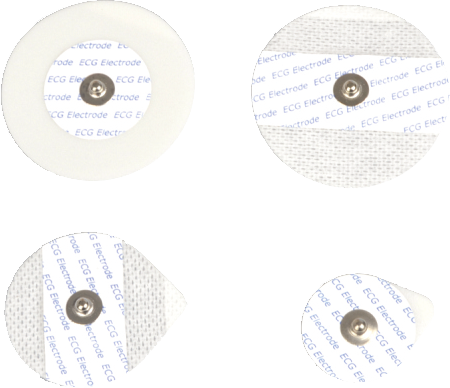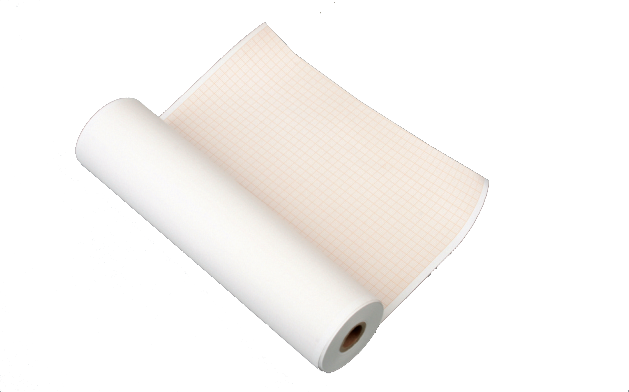ECG Paper
Different sizes & colors available.
ECG Paper is a helpful tool for diagnosing various cardiovascular diseases. ECGs can provide information about the heart rate, rhythm and electrical activity of cardiac chambers and atria.
Description
Different sizes & colors available.
How ECG Paper Works
An electrocardiogram (ECG) is a diagnostic tool that measures and records the electrical activity of the heart. This test is used to detect abnormalities in the heart's rhythm or structure. ECG paper works by printing out the electrical activity of the heart on a sheet of paper. The paper is placed on a special table that is connected to an ECG machine. The machine reads the electrical signals from the heart and prints them out on the paper. The doctor or technician will then interpret the results of the ECG to diagnose any problems with the heart.
How an ECG Can Help Diagnose Cardiovascular Diseases
An electrocardiogram (ECG) is a diagnostic tool that measures and records the electrical activity of the heart. It is used to detect abnormalities in the heart's rhythm and can be helpful in diagnosing cardiovascular diseases. An ECG can help diagnose cardiovascular diseases by providing information about the heart's electrical activity. This information can be used to detect abnormal rhythms, which may indicate a problem with the heart's structure or function. Additionally, an ECG can help determine if there is any damage to the heart muscle or if there is a blockage in one of the coronary arteries.
Types of Typical Conditions Seen in an ECG
There are a few different types of typical conditions that can be seen on an ECG. The first is called sinus bradycardia, which is when the heart rate is slower than normal. This can be caused by things like heart block or certain medications. The second is sinus tachycardia, which is when the heart rate is faster than normal. This can be caused by things like stress, anxiety, or exercise. The third is atrial fibrillation, which is when the heart's electrical activity is chaotic and results in a rapid heart rate. This can be caused by things like congestive heart failure or high blood pressure. Finally, there is ventricular tachycardia, which is when the heart's electrical activity starts in the ventricles (the bottom chambers of the heart) instead of the atria (the top chambers of the heart). This can be caused by things like myocardial infarction (heart attack) or cardiomyopathy (a disease of the heart muscle).
ECG Paper, Medical Grade Adhesive foam monitoring electrodes with sticky gel feature a high-performance adhesive. The raw material used in ECG Electrodes is biocompatibility tested as per Medical Device Directives. All CARDIOPRINT® ECG electrodes meet ANSI/AAMI EC12 on disposable ECG electrodes. The conductive gel is sticky so maintains skin contact for excellent trace quality.
ECG Paper, Electrocardiogram Paper, Rolls, Price, Online Nexgen Medical, ECG Paper price in the USA.

Prepare the skin
Before placing your electrodes, it is very important to prepare the subject’s skin by wiping the chest area thoroughly with skin cleansing (alcohol) swabs. This removes any oil that may be on the skin and which can cause drift in your ECG/EKG signals.
FOAM TAPE Adhesive
CARDIOPRINT ® electrodes by the USA on electrodes are great for patients who have had reactions to your primary electrode or for elderly patients. It’s not harsh in quality materials making it the perfect option for sensitive skin patients in cardiac rehab.
Understanding paper speeds
- Paper output speed is the rate at which the ECG machine produces a trace
- The standard output is 25mm per second
- If a different paper speed is used, standard rate calculations will have to be modified appropriately (see other examples below)
Calculating rate
There are
three main methods of calculating ECG rates. There is no specific
best method, and preference varies between clinicians. However, certain methods may be better suited for rhythms such as bradyarrhythmias or tachyarrhythmias.
1) Large square method
- Recall above that 300 large squares is equal to 1 minute at a paper speed of 25mm/sec
- We can thus calculate bpm by dividing 300 by the number of LARGE squares between each R-R interval (space between two consecutive R waves = one beat)
- While we strive to provide complete, accurate, and expert-reviewed content on our 'Platform', we make no warranties or representations and disclaim all responsibility and liability for the completeness, accuracy, or reliability of the aforementioned content. The content on our platform is for informative purposes only, and may not cover all clinical/non-clinical aspects. Reliance on any information and subsequent action or inaction is solely at the user's risk, and we do not assume any responsibility for the same. The content on the Platform should not be considered or used as a substitute for professional and qualified medical advice. Please consult your doctor for any query pertaining to medicines, tests and/or diseases, as we support, and do not replace the doctor-patient relationship.
